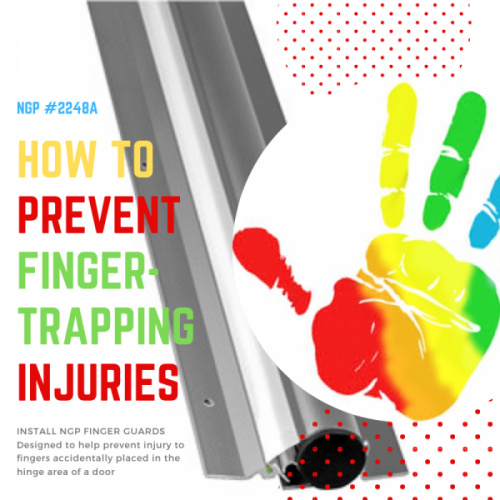
A Finger Guard can prevent a potentially severe accident.
Children commonly injure their hands. According to a study published by the American College of Emergency Physicians, children younger than 5 years old had the highest rate of finger amputations treated in hospital emergency rooms.
Door-finger accidents occur on both the handle side and the hinge side of the door. The handle-side accidents are more common, but generally less severe. Conversely, the hinge-side accidents are less common but generally more severe. For this reason, some people familiar with the door-finger hazard refer to the hinge side of the door as the “amputation side of the door.”
Almost 75% of lost fingers from young children resulted from their finger(s) getting caught, jammed, or crushed in a doorway during the closing of a door. When the door opens, a wide gap is created in the hinge cavity, which poses a risk for small children who are attracted to poke their fingers into the opening. It is now a customary practice to fit finger guards to certain doors in nurseries, primary schools and care environments.
There is often liability associated with these incidents. The cost to an establishment that doesn’t comply with these safeguards can be in the hundreds of thousands of dollars, as it was in a 2011 verdict where, “…it was considered that the injury could have been avoided if the nursery had fitted door guards to its doors.”
What is shocking is how often finger-trapping accidents, where a door is involved, still occur–when they are entirely preventable.
Finger Guards, like National Guard Products’ #2248, are an effective and inexpensive way to save those precious fingers from injuries that cause significant functional difficulties and cosmetic deformities.
NGP Finger Guards are designed to help prevent injury to fingers placed in the hinge area of a door. [The reason for the severity of injuries from the hinge side of the door is the tremendous leverage involved: a door closing into its frame can exert a pressure of approximately 32,000 pounds per square inch.]
NGP’s Finger Guards feature an internal spring mechanism that maintains constant tension against the polyethylene fabric, which helps prevent fingers from entering the dangerous area behind the edge of the door. This durable “endless cycle” mechanism allows the hinge shield to function in any position (opened, closed, or anywhere in between), allowing the door to be left in any position without the need for a doorstop. It is easy-to-install, fire-resistant, and highly recommended for childcare facilities.



